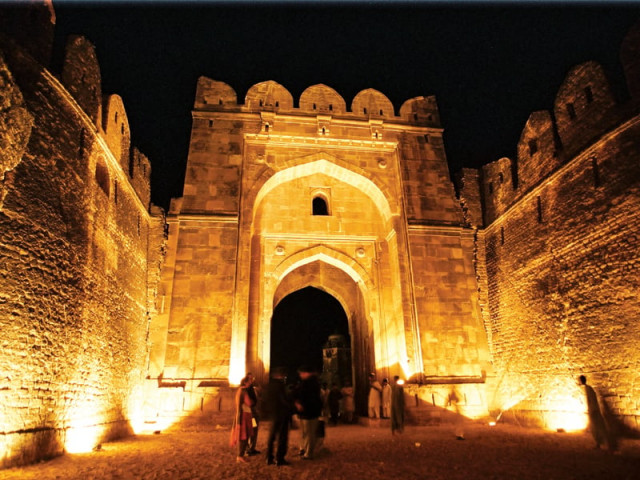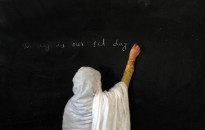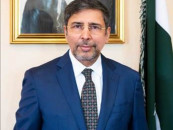Heritage preservation: Restoring the lost glory of Rohtas Fort
Abandoned by governments, the historical site is being renovated by donors.

The project involves upgradation of various facets of the centuries-old fort. PHOTO: EXPRESS
Rohtas Fort, the historical monument located near Jhelum, has undergone a new series of renovations, aimed to boost the site’s tourism value.
The 16th century garrison fort, commissioned by Sher Shah Suri to prevent advances of the Mughal armies from the West, underwent a restoration drive in the last decade. But it had worn down since 2010 when ownership moved from the federal government to Punjab authorities.
The latest renovations, launched in January and to be completed the following week, have been undertaken by the Himalayan Wildlife Foundation (HWF) with the help of a Rs2.5 million grant from the USAID’s Small Grants and Ambassador’s Fund Programme.
HWF Chief Executive Officer Dr Anisur Rahman told The Express Tribune that the fort’s visitors’ information section as well as a centuries-old stepped water well have been refurbished. They have also fixed night lights installed at the pathways, toilets and electrical equipment. A water fountain at the site has also been made operational.

The fort’s Langar Khani Gate, the entry point for the pantry which stored rations for Suri’s 30,000-strong army, has also been restored by the organisation.
The HWF’s involvement with the fort’s renovation began 13 years ago when Rahman visited the fort on a leisure trip. “The place was in a terrible condition back then,” Rahman recalled.
People were using the fort — a Unesco World Heritage site — to defecate because there were no proper toilets available. The structure was crumbling and dilapidated.
HWF approached the now-defunct Ministry of Culture to complain about the fort’s condition. The ministry said it could not support the repairs but it allowed HWF to renovate the Shah Chand Wali Gate of the fort, Rahman said.
That initial work led HWF to launch a five-year project, supported by funds from Shell Pakistan, the Royal Norwegian Embassy and money generated by their own fund-raising efforts.
That project, completed in 2006, helped build toilets and parking lots. Several buildings were restored and others illuminated to facilitate night visits. However, the most important part was educating the visitors about the fort’s history.
“We observed that numerous study tours from schools and colleges frequented the fort but they had no clue about the place’s historical value,” Rahman said. “So we built a visitors’ information centre that had leaflets and brochures for tourists to give a historical overview of the place.”
Once renovated, the government resumed the supply of funds to the fort. That crucial funding ceased after the 18th Amendment put the fort under the control of Punjab’s Archaeology Department.
“Conditions deteriorated severely thereafter and the hard work we had put in for renovations was lost because of (Punjab) government’s neglect,” said Rahman.

The current renovations have made a considerable difference but the historical site still faces major challenges including shortage of funds for regular maintenance.
In 2006, HWF had pushed for an entry fee for the fort, which would be retained by site authorities as a conservation fund to pay for maintenance and staff salaries. But the idea was shot down by the finance ministry.
Rahman said the Punjab government is not paying the sweepers and gardeners of the fort on time, which results in their lax attitude regarding its upkeep.
“There is no sustainability mechanism for the fort. It is a sad situation and can only be fixed if the government takes ownership of the fort,” suggested Rahman.
Published in The Express Tribune, May 27th, 2013.



















COMMENTS
Comments are moderated and generally will be posted if they are on-topic and not abusive.
For more information, please see our Comments FAQ